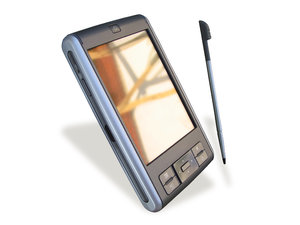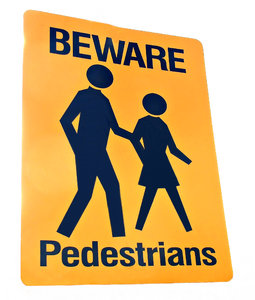We all wish that our kids would stay young forever. But the truth of the matter is that they’re getting older and they’re getting their driver’s licenses. While we can’t ride with them everywhere they go, there is a way for us to keep an eye on them. Some say it’s not a well-thought out idea though. It’s the “PUSH TEXT” app and it’s helping you to get a report card on your teen’s driving habits.

According to the Courier-Journal, this new app was created by a Cooper City, Florida father. When you download and signup for this app, you get two bumper stickers and access to the app. You put one of the stickers on your teen’s car. It reads, “How is my KID driving? Push Text my tag #.” When drivers who have the app see your teen’s car, they can send an anonymous text message to the account.
Other drivers will help to keep an eye on your teen driver. That’s where the worries come in. Some say that they worry that drivers will submit falsified reports. Others are worried that the app will urge drivers to whip out their phone and start texting while driving, increasing the risks for an accident.
Our Boston car accident lawyers understand that teens are heading back to school and they’re spending just as much time behind the wheel as they are in the classroom. Teen drivers are at serious risks for car accidents during this time, too. Unfortunately, car accidents continue to be the number one cause of death for these young drivers. Parents are urged to sit down with their teen and talk with them about the dangers of driving. Talk with them about the importance of safe and responsible driving habits behind the wheel. Your influence is bigger than you might ever imagine. You are one of the most influential people in these young driver’s habits.
The “PUSH TEXT” app was released late last month.
“This puts a little bit of yourself in the passenger seat as a parent,” said the app’s designer.
According to the Massachusetts Department of Transportation (MassDOT), teen drivers are four times more likely to die in a car accident and nearly 15 times more likely to be injured than any other age group of drivers. By a 2-to-1 margin, teenagers are more likely to kill someone in the car with them than themselves.
Driver inexperience and speed are the two top causes of car accidents for this young age group. Following these top causes are emotional distractions, alcohol and neglect to wear a seat belt.
Two out of every five fatalities among teens is the result of a car accident, according to the Centers for Disease Control and Prevention (CDC). Every year, thousands are killed in these incidents.
In the state of Massachusetts, car accidents rack up quite the bill, especially among teenagers. In 2005, car accidents cost nearly $395 million in the state. Of these costs, teens were responsible for more than $65 million. Medical costs accounted for nearly $10 million.
Continue reading
 Boston Car Accident Lawyer Blog
Boston Car Accident Lawyer Blog












